It is one of the three major religions of early India, which has been continuously followed around the middle of the first millennium BC. Jainism emerged in India about the same period as Buddhism. It was founded by Mahavira ( 599 – 527 BC) in about 500 B. C. Mahavira was born around Patna in which is now known as Bihar state. Mahavira was called ‘Jina’ meaning the big winner and from this title was derived the name of the religion.
Jainism is related to Buddhism. Both were developed as discord to the Brahmanic philosophy that was imperative during that period in north-east India. Both share a belief in incarnation which eventually leads to freedom.
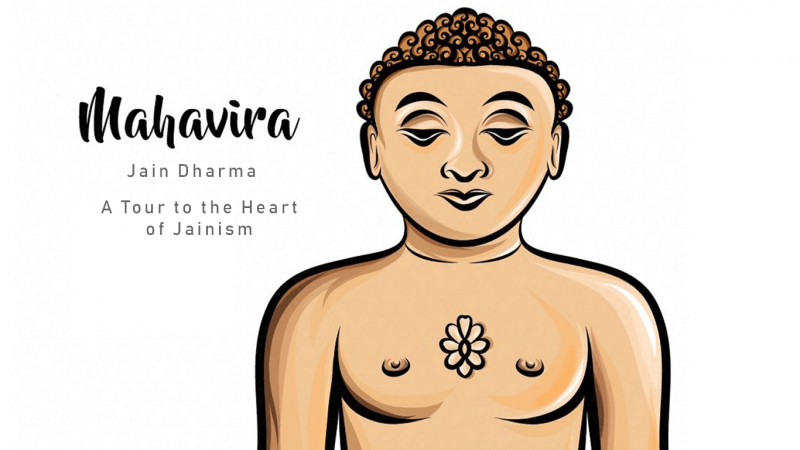
Jainism is procured from the word Jina, meaning ‘liberator’ or ‘victor’, referring to religious rather than material conquest. Jains firmly believe (as do Buddhists and Hindus) in a cycle of birth and rebirth, influenced by the effects of the individual’s behaviours and attitudes this concept is known as ‘karma’.
The final goal of the believer is to divide the cycle and attain liberation. To aid them to achieve this goal, Jains worship a group of 24 liberated souls called Jinas or Tirthankaras they were ‘those who ford the river’ between the material and spiritual worlds, who serve as teachers and role models to the followers.
Jainism springs with a solemn concern for the human soul in its relationship with the laws overseeing existence in the universe, with other living beings, and to its own eventual state in eternity. Firstly, it is a belief of the heart: the golden rule of which is Ahimsa or nonviolence in all parts of a person– mental, verbal, and physical.
Jains have deep empathy for all forms of life. Jainism offers a quiet, overwhelmingly earnest way of life, a cultural emphasis on kindness, a society of ethics that has dramatically transformed the world and will remain to effect change. Jainism is an ecologically responsible way of life which is peaceful in thought, action, and accomplishment.
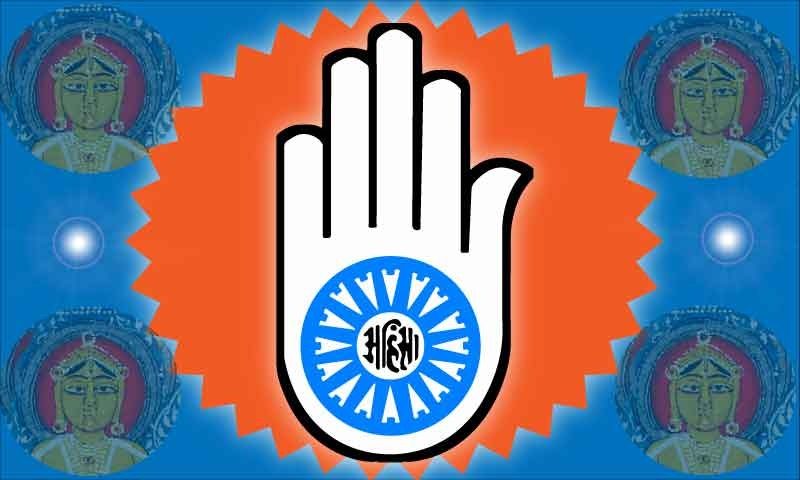
Features of Jainism:
Truth and Non Violence
It is based on two principal concepts: Nonviolence (ahimsa) and truth (satya). These are essential not only for individual enlightenment but also for social welfare and affluence. All the twenty-four Tirthankars taught nonviolence and honesty for spiritual advancement as against divine rituals. Nonviolence is based on the virtue of life and love for all living beings. Truth clarifies the mind. Speaking pleasant and nutritive truth is nobler than silence.
Human Peace
Jain ethics deals with interpreting human peace problem. Jainism, owing to its complete and accommodative view, is well-equipped to resolve the predicament of world peace. Jainism addresses the multiplicity of perspectives which is called anekantavada.
Universal Religion
One of the unique qualities of the Jain religion is that it can be adopted as a ‘universal religion’. If a person who is not even a supporter of the Jain religion works dharma which consists in becoming free from attachment and aversion, they are a Jain in the true sense. This shows the kindness of Jainism. There is a concept of asocca kevali” in Jainism. This concept in the Jain religion gravels the way for it being accepted as a universal religion, It is indeed a “Non- parochial religion”.

The Caste System
In the Jain religion, the notion of caste is contemplated unreal. It does not give any refined importance to caste by birth. During the period of Lord Mahavira, the Vedic tradition concocted much strain on caste. Lord Mahavira elevated his voice toward this. He said ‘Brahmana, Ksatriya, Vaisya and Sudra are all classified according to their performance and not according to their caste’.
A single person can belong to all four castes in his life. When a person guards their country against enemies, he becomes a Ksatnya. When he does several businesses, he becomes a Vaisya. When he performs a service, he is a Sudra and while teaching he is a Brahmana. Lord Mahavira does not give any refined attention to caste, he was totally fronting the practice of untouchability. According to him, to judge anyone untouchable on the grounds of caste was violence. He has always lectured that he says, “No hine, No airitte.” which implies that , “No one is inferior, no one is superior.”
Equality
Jainism has always supported equality. Lord Mahavira assigned equal value to men and women. Mahavira was the primary person who inducted women into his order. Mahavira went abreast the dominant social norms and uplifted the fair sex, as a result, that nuns outnumbered monks. Historical documents show that there were 14000 monks and 36000 nuns in Mahavira’ s order.
The Ontological View
The ontological view of Jains is regarded primarily with life and survival rather than the conception of the universe and the conception of God. Jainism, however, cannot be viewed as agnosticism or metaphysical nihilism. It is to the honor of Jain thinkers that they assembled a philosophy and theory of truth out of the negative path. Jainism does not contradict reality. Jain philosophers adopted an intermediate course by propounding a theory that the world consisted of two infinite, uncreated, synchronizing but sovereign categories of substances.
The Concept of Godhood:
The true God is not the God as the architect of the cosmos, nor the God who tides over our economic problems or panders to our vanity by fulfilling our wishes, but it is the God who appears within and through our value-sense, pulling us up and through the developing ideas and with whom I may perceive myself to be united in the profound bonds of love. Jain preaching’s said a man is mounted to Godhood and God to man.
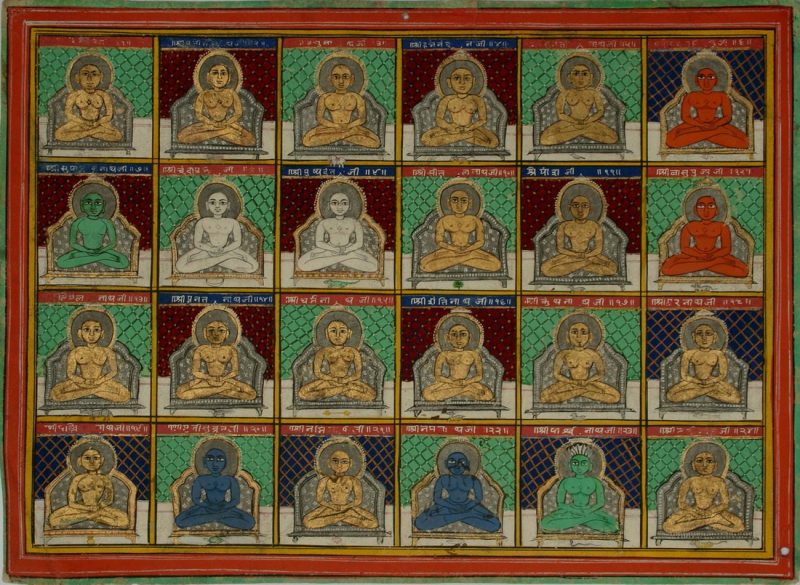
Teachings of Jainism
Mahavira did not consider in the existence of God. He considered that God is the biggest, the stateliest and the comprehensive manifestation of all the powers which lie latent in the soul of man. The teachings of Mahavira were uncomplicated. He based his teachings on three thoughts which were as follows:
- Right Faith (Samyak Darshana): Right faith implies hearing, seeing, feeling, and sensing everything right and to steer clear of conjecture and notions that can get in the way of seeing the truth.
- Right Knowledge (Samyak Gyana): It means having a methodical and satisfactory knowledge of the universe. This includes having information of the 5 substances of the universe, however having this knowledge with the right mental state. A person who has accurate knowledge will be simply freed from these things and by doing that will achieve peace of mind.
- Right Conduct or Action (Samyak Charitra): means conveying your life in the right way according to the Jain rules, and to not wreck any living thing, or to be fastened to properties. Jains believe that a person who has the right faith and right understanding will be motivated to have right conduct. They also believe that a person without right faith and knowledge will not be able to deliver the right conduct. This means there is no use of following the reality and rituals to impress someone.
These three instructions are called Triratna or Three jewels. Apart from the three jewels, Mahavira preached his disciples to follow the five principles which are as follows:

- Ahimsa – not to hurt any living beings
- Satya – to speak justice
- Asteya – not to steal
- Tyag – not to own property
- Brahmacharya – to lead a righteous life.
Jain Councils
The description of the three Jain councils has been given below:
| Name | Year | Place | King | Purpose |
| 1st Council | 3rd century BC | Pataliputra now (Patna) | Stulabahu | At this council, they gathered the sacred knowledge and put together the eleven Angas. |
| 2nd Council | 5th century AD | Mathura and Vallabhi | Skandila | It was called to continue the transmission of sacred knowledge after famines. |
| 3rd Council | _ | Vallabh | Svetambara Jain monks | This Council appeared to reduce down to writing sacred texts (JainAgama) that had so far been transmitted orally. |
Jain literature
Lord Mahavir’s teaching was personally organized by his disciples into many Sutras (texts). Collectively these texts are called Jain accepted or Agam literature. he Ang-agams are the former religious scriptures and the backbone of Jain writing. The twelfth Ang-agam is called Drastivad. The Drastivad consists of fourteen Purva subjects, also known as Purvas or Purva-agams.
Jain Literature also called as Jain Agamas. They are official texts of Jainism based on Mahavira’s teachings. There are in all 46 texts.
- Purva: It is one of the well known Jain literature. The contents of the Purvas was so vast, that the culture holds that, the first one is written by the pamphlet of the ink that is commensurate to the size of one elephant. Another one is two times larger, and the third one is two courses larger than the second one and so on. It was said that all efforts to express the knowledge of Purva in words were in trivial.
It provided specific information about six kinds of reals or substances, all kinds of living creatures, the things which were to exist for infinite time, those which were to come into actuality for a fleeting time and their time of extinction, five kinds of knowledge, truth, soul, karma, mantra, benefits of self-discipline, the lifestyle of monks and householders, birth, death and a comprehensive description of the whole universe.

There are in total fourteen Purvas containing several descriptions and details:
- Utpaad Pūrva: Living (Jiv), non-living (Ajiv), and its modes (Paryäya)
- Agrayaniya Purva: Nine realities (Navtattva), six substances (Shad-dravya), etc.
- Viryapravada Purva: Relating to the energy of the soul, non-living, etc.
- Asti Nasti Pravada Purva: Multiplicity of views (Anekāntvād), Saptabhangi, etc.
- Jnana Prāvada Pūrva: Five types of knowledge and three types of ignorance, etc.
- Satya Pravada Purva: Relating to the truth, restraint, silence (Maun), speech, etc.
- Atma pavada Purva: Analysis of soul from different view points (naya)
- Karma Pravada Pūrva: Theory of karma, its bondage, influx, its nature, fruition, shedding
- Pratyakhyana Purva: Giving up (Pachchhakhän), restraint, vows, detachment, etc.
- Vidyā Pravāda Purva: Expertise (vidyä), exceptional abilities, practice
- Kalyana Pravada Purva: Spiritual alertness (Apramäd) and laziness (Pramäd)
- Prana Pravada Purva: Ten types of life substances or vitalities (Prän), life span, etc.
- Kriyā Visala Purva: Skills, 64 arts of women, 84 arts of men, etc.
- Lokbindus ā Purva: Three parts of the universe including heavens and hells, mathematics, etc.

Agama: These are handbooks of Jainism based on the discussions of the Tirthankara. The discourse delivered in a Samavasarana (divine preaching hall) is called Śhrut Jnāna and covers twelve angas which are as follows:
- Ācāranga sūtra
- Sūtrakrtanga
- Sthānānga
- Samavāyānga
- Vyākhyāprajñapti or Bhagavati sūtra
- Jnātrdhārmakathāh
- Upāsakadaśāh
- Antakrddaaśāh
- Anuttaraupapātikadaśāh
- Praśnavyākaranani
- Vipākaśruta
- Drstivāda
Jain architecture
Jain architecture is a by-product of Hindu and Buddhist styles. In the initial years, many Jain temples were made appending the Bhuddhist temples following the Buddhist rock-cut architecture. Initially, these temples were largely sculpted out of rock faces and the use of bricks was almost negligible
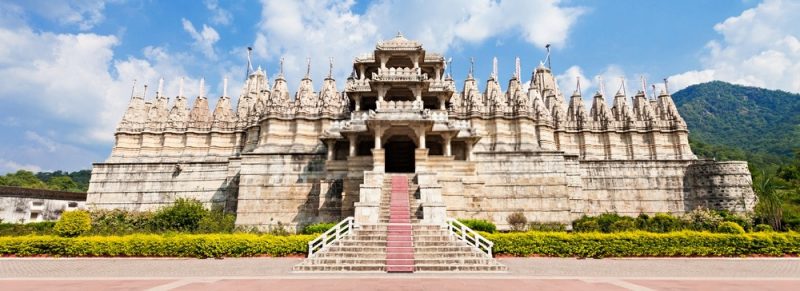
The enrichment of Jain art to the mainstream art in India has been considerable. Every phase of Indian art is designed by a Jain version and each one of them is worthy of scrupulous study and understanding. The magnificent Jain temples and sculptured monuments of Karnataka, Maharashtra, and Rajasthan are world-renowned. The most magnificent of all Jain temples are found at Ranakpur and Mount Abu in Rajasthan. Deogarh (Lalitpur, U.P.), Ellora, Badami, and Aihole also have some of the valuable specimens of Jain Art. Features of Jain architecture are as follows:
- As exposed to solitary Hindu temples, Jain temple architecture are mostly found in the form of ‘temple-cities’. These temple-cities are magnificent temple compounds, which contain huge numbers of an individual or interconnected temples and shrines.
- Most of the Jain pilgrimage sites were built on hilltops which include Palitana temple in Gujarat, Sonagiri temple in M.P. etc.

- The cells of these temples have pointy domes and wherever there is a dome, the shafts are omitted to create an octagonal space within.
- Jain temples are noted for the use of rich materials like marble and ornamentation.
- Domes or shikharas on the top are usually miniature than the ones found in Hindu temples. These versatile dome points, reaching toward the sky give a very distinct appearance to Jain temple cities.
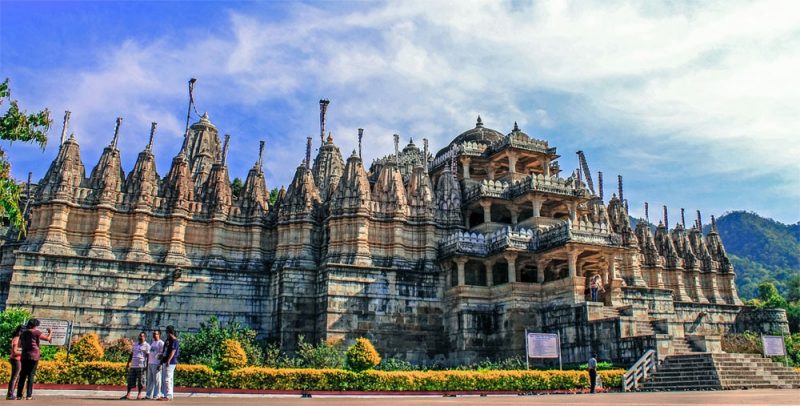
- Jain temples have numerous pillars having a well-designed structure, forming a square.
- The squares thus formed constitute chambers or chapels which contains the image of a deity.
- These pillars and roofs of the temple are richly carved and well decorated.
- Unlike Buddhist Viharas, the Jain viharas do not have the assembly or prayer hall surrounded by cells. The cells of Jain viharas are small and plain, intended to observe rigorous asceticism by Jain monks. The doorways are also small and one has to stoop or crawl to enter a cell.
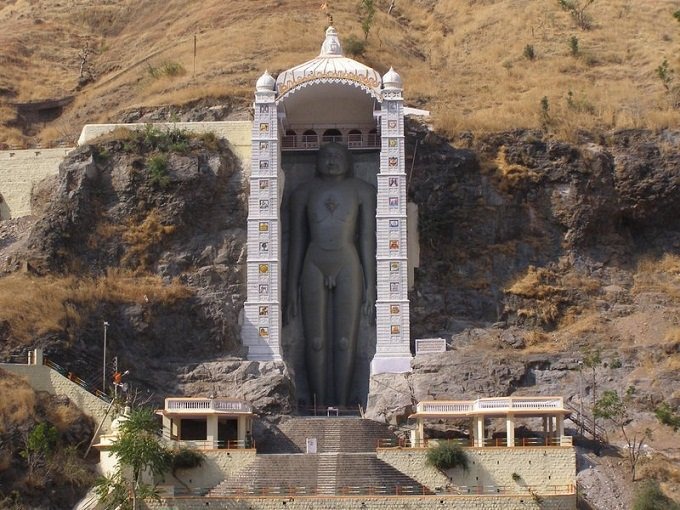
- Jain temples were mostly constructed on platforms or terraces, generally referred to as “Jagati” or “Vedi”. Even rock-cut cave temples have platforms. This was done to elevate the temple above the surrounding surface and create a distinct sacred area.
- Jain temples are enclosed by free-standing high compound walls, called as Prakara.
- Structurally speaking, a Jain temple is formed on a square plan with openings in four cardinal directions, each of which could lead to the image of a Tirthankara. The Chamukh temple of Lord Adinath is a typical example of the four-door temple.
